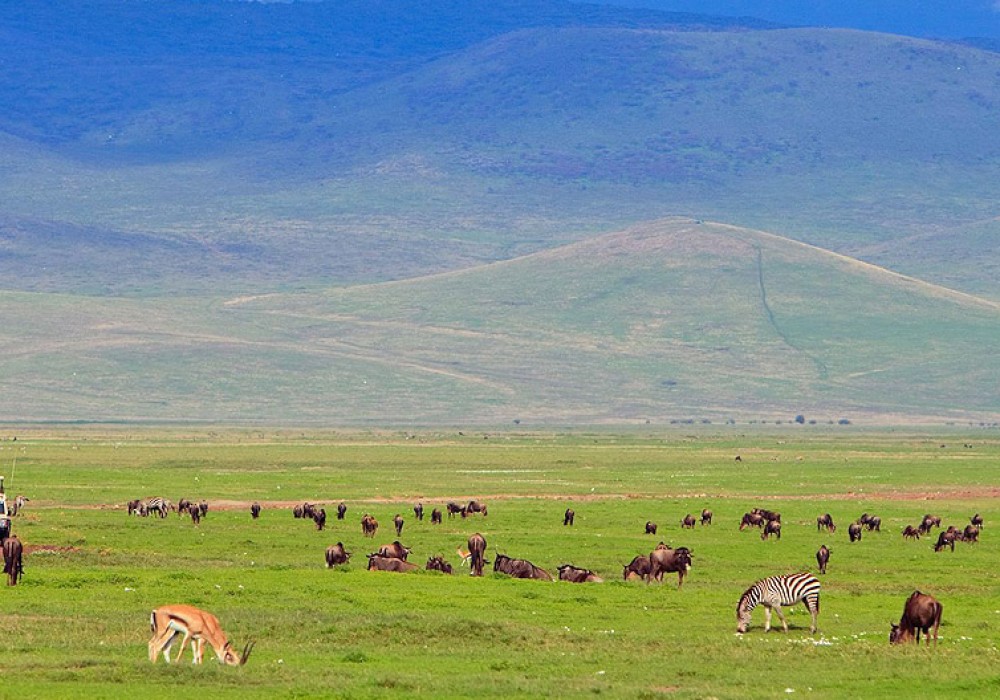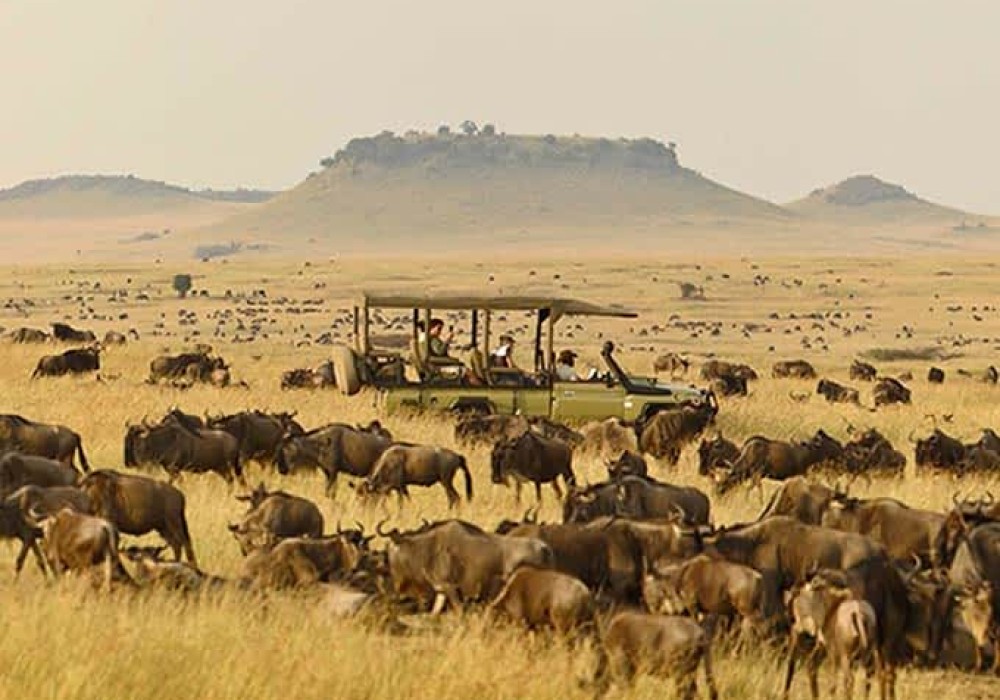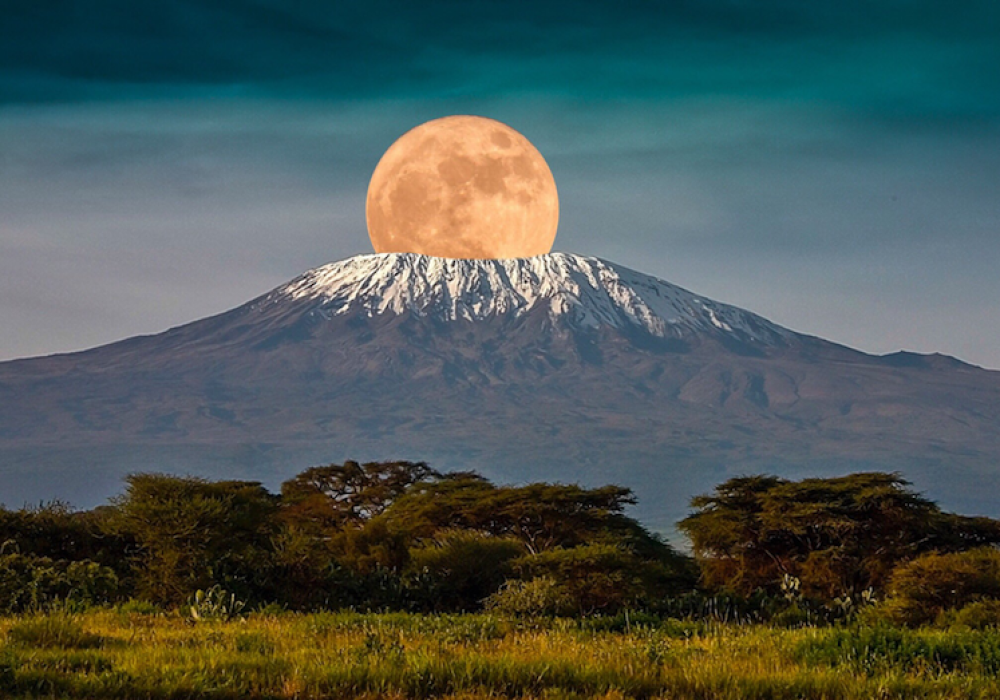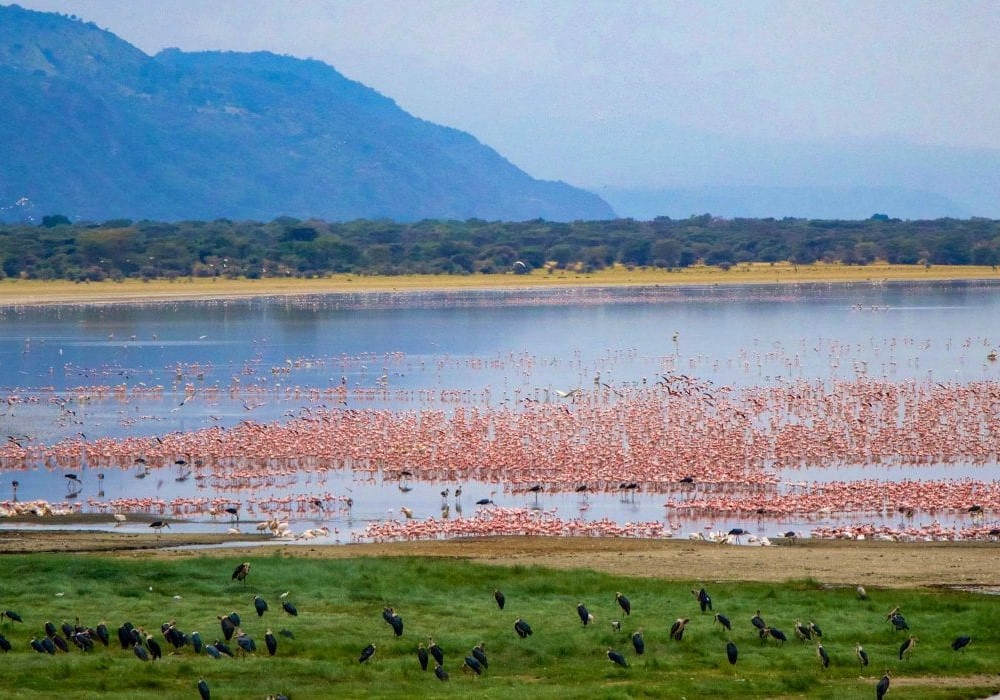
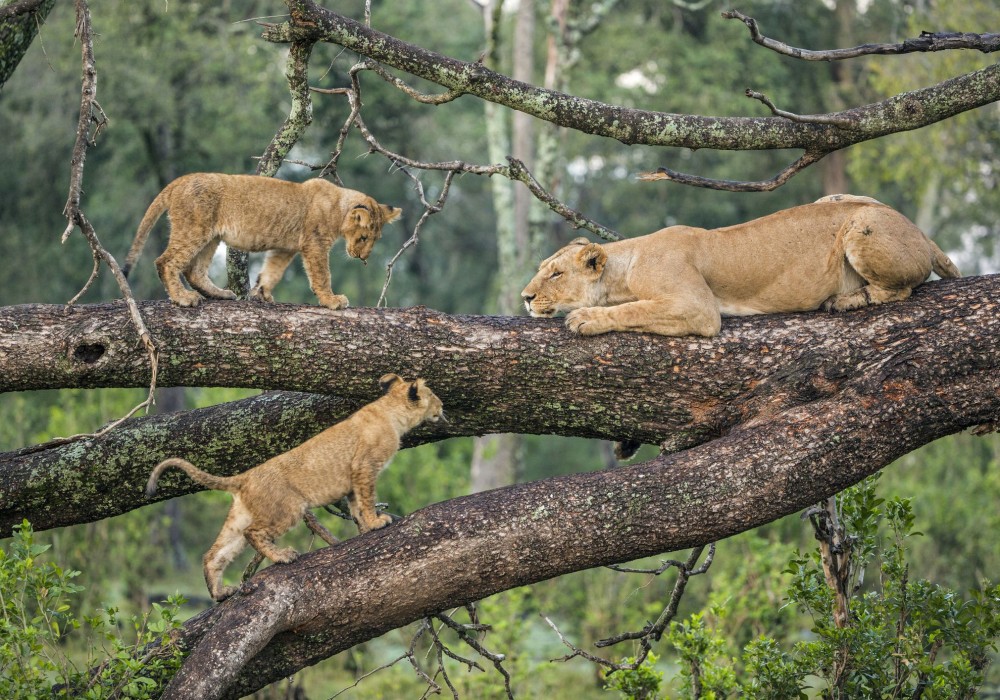
Lake Manyara National Park
Located beneath the cliffs of the Manyara Escarpment, on the edge of the Rift Valley, Lake Manyara National Park offers varied ecosystems, incredible bird life, and breathtaking views.
Located on the way to Ngorongoro Crater and the Serengeti, Lake Manyara National Park is well worth a stop in its own right. Its groundwater forests, bush plains, baobob strewn cliffs, and algae-streaked hot springs offer incredible ecological variety in a small area, rich in wildlife and incredible numbers of birds.
The alkaline soda of Lake Manyara is home to an incredible array of bird life that thrives in its brackish waters. Pink flamingos stoop and graze by the thousands, colorful specks against the gray minerals of the lake shore.
Yellow-billed storks swoop and corkscrew on thermal winds rising up from the escarpment, and herons flap their wings against the sun-drenched sky. Even reluctant bird-watchers will find something to watch and marvel at within the national park.
Lake Manyara’s famous tree-climbing lions are another reason to pay this park a visit. The only kind of their species in the world, they make the ancient mahogany and elegant acacias their home during the rainy season, and are a well-known but rather rare feature of the northern park.
In addition to the lions, the national park is also home to the largest concentration of baboons anywhere in the world—a fact that makes for interesting game viewing of large families of the primates.
Weather and Climate in Lake Manyara
As with any vacation or traveling that you might be planning, you’re probably wondering about what climate and weather to expect when visiting Lake Manyara. For the most part, the weather in Lake Manyara National Park is temperate and comfortable all year-round.
Certain months have chilly evenings and mornings and some months see more rainfall than clothes. It’s important to check the weather for the months you’re visiting so you know what to expect and what to pack before leaving your country.
The good news is that it rarely gets very hot! Despite the belief that everywhere in Africa is blazing with sun all the time, Lake Manyara never gets so hot that you will be extremely sweaty and uncomfortable.
Even during the peak rainy season, it rarely rains all day to the point where your game drives will be postponed.
Here is a more thorough breakdown of the Lake Manyara climate month by month.
Dry Season
The dry season in Lake Manyara goes from June to November. The temperatures vary slightly within the dry season depending on which month you’re visiting.
June Weather
June is a warm month with average temperatures being between 25°C (77°F) and 15°C (59°F). While the temperatures are considered warm for most travellers coming from colder places like Europe and North America, June is actually one of the coldest months in Lake Manyara.
July Weather
Weather in July is very similar to the weather in June with average temperatures between 14°C (57.2°F) and 25°C (77°F). Cold weather is common in the mornings and evenings so make sure to bring layers and at least one medium to heavy jacket depending on how cold you normally get.
August Weather
The weather in August is about the same as in June and July, but it’s starting to get a little warmer, especially during the daytime. Average temperatures are between 15°C (59°F) and 26°C (78.8°F).
September Weather
As September begins, the rainy season is approaching so the days begin to warm up a little. Average temperatures are between 15°C (59°F) and 28°C (82.4°F).
October Weather
While October is considered the last month in the dry season, the rainy season can always begin early. Mid to late October see some rainfall depending on the year. The average daily temperatures are between 16°C (60.8°F) and 29°C (84.2°F).
Wet Season
Lake Manyara also has a long wet season lasting from November to May. The temperatures are still warm and mild during this time. March through May see the most rainfall as it’s the peak rainy season.
January and February see the least amount of rain out of all the months. November and December are known as the short rain months. It will only rain for a few hours every day so you can still easily plan activities around the rainfall.
November Weather
November is the start of the rainy season so it brings along weather that is closely aligned with spring temperatures. Temperatures range between 17°C (62.6°F) and max 29°C (84.2°F).
December Weather
December is the second month of the rainy season and brings along temperatures that are very close to November with the averages being between 16°C (60.8°F) and 29°C (84.2°F).
January Weather
Although January is officially classified as a month in the wet season, sometimes travellers see a dry spell in Lake Manyara during this month. It’s one of the warmest months in the park with average temperatures between 6°C (60.8°F) and 30°C (86°F).
February Weather
February can also be a dry month depending on the year. You may be more likely to experience rain if you come at the end of the month. Less than half of the days out of the month see rainfall though. Average temperatures are between 17°C (62.6°F) and 30°C (86°F).
March Weather
March is the first month of the long rainy season but it still has pretty warm temperatures. The averages are between 17°C (62.6°F) and 30°C (86°F). Although it’s the beginning of the long rainy season, there is less rain in March than in April and May.
April Weather
April sees rain almost every day. There are several hours each day when it will heavy rain. The rest of the day will be clear, but the skies are still cloudy. Average temperatures are between 18°C (64.4°F) and 27°C (80.6°F).
May Weather
The weather in May is very similar to April. It rains every day for several hours and the rest of the day has cloudy skies. Average temperatures are 26°C (78.8°F) and 17°C (62.6°F).
What are the Warmest Months in Lake Manyara?
January through March are the warmest months since the temperature often reaches 30°C (86°F). The mornings and evenings are much cooler though. Since the skies are often cloudy, the climate is still mild since there is no blazing sun.
What are the Coldest Months in Lake Manyara?
June and July have a maximum temperature of 25°C (77°F). Evenings and early mornings can get very cold during these months which is why recommend travellers bring a jacket, a scarf, socks, and some closed-toed shoes.
Visiting Lake Manyara
One of the best things about Lake Manyara is that most safari travelers agree that it never gets too hot or too cold, especially when you pack all the right clothing. Although there is a long rainy season, it never rains all day.
So, even if you’re visiting during the rainy season, you’ll still find plenty of time to be outside on game drives and doing other activities.
Lake Manyara’s comfortable climate is one of the best reasons to visit this stunning national park in Tanzania!
